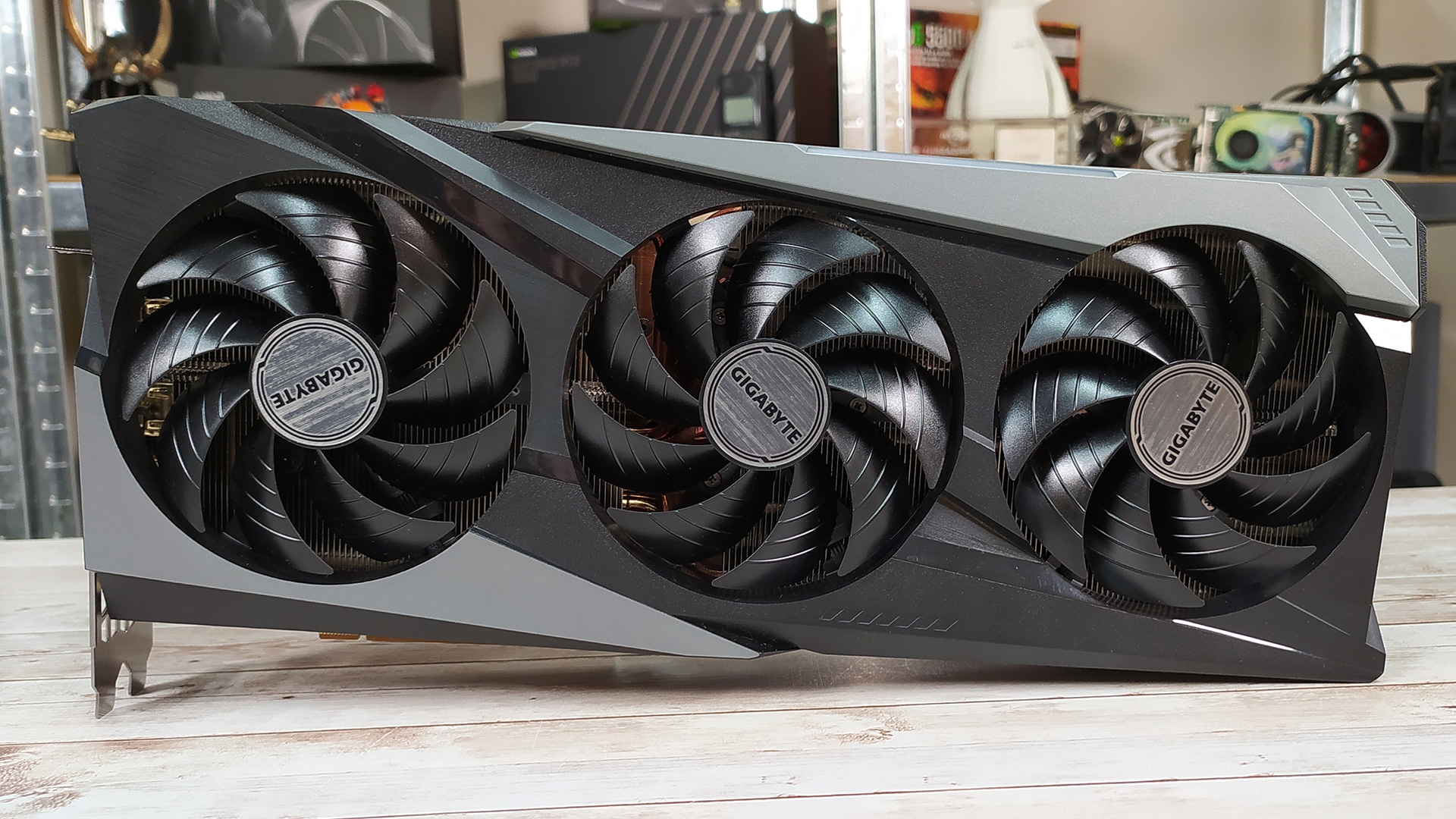Radeon RX 6950 XT, waiting for RDNA 3: the review of the new top of the AMD range
A few weeks have passed since the arrival on the market of refresh of Radeon RX 6000 video cards, made up of three models that respond to the names of Radeon RX 6950 XT, RX 6750 XT and RX 6650 XT. As we have seen when testing two models of the Radeon RX 6650 XT, we are faced with models practically identical to their predecessorsexcept for the use of faster memory and slightly higher frequencies. The performance increase is therefore very contained, so much so that several times we have asked ourselves the meaning for AMD to proceed with this refresh.
Motivations aside, in this article we see how the Radeon RX 6950 XT, the one that will in effect remain the top of the range of the company for the next few months until the introduction of solutions based on the new RDNA 3 architecture, expected by the end of the year. Not having a reference solution available, we got our hands on one RX 6950 XT GAMING OC 16G di Gigabytebut before we deal with it, let’s see together the reference specifications of the newcomer compared to the 6900 XT.
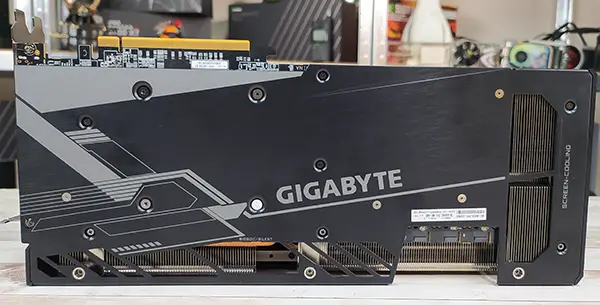
The Radeon RX 6950 XT is identical in terms of technical specifications to the RX 6900 XT, so it retains a Navi 21 GPU with 5120 stream processors, 80 ray accelerators, and 16GB of GDDR6 memory. Also on board 128 MB of Infinity Cache, a feature that allows the card to have a memory bus equal to 256 bits. The cache in question, in fact, acts as a bandwidth amplifier allowing AMD to implement a smaller bus, which contains costs and consumption.
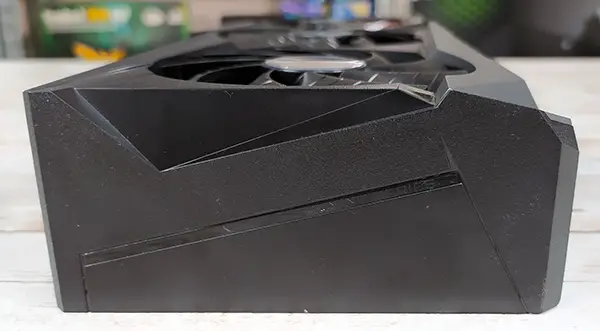
The latest arrival sees a incremento del Game Clock e del Boost Clock from 2015 and 2250 MHz of the 6900 XT up to 2100 MHz and 2310 MHz. In addition, GDDR6 memory goes from 16 to 18 Gbps. Consequently the TBP sale and 300 a 335W. Still talking about reference cards, the RX 6950 XT comes with a black heatsink as opposed to the solution adopted on the RX 6900 XT which has a central silver band.
Gigabyte RX 6950 XT GAMING OC 16G
Gigabyte’s proposal stands out for its cooling system and factory overclocking. The model in question is 332 mm long, 143 mm high and 57 mm thick, numbers that make it particularly bulky. On board we find three 8-pin PCIe power connectorswhile in the back there are two HDMI 2.1 and as many DisplayPort 1.4a. The Navi 21 GPU on this card can go up to 2116 MHz in Game Clock and up to 2324 MHz in Boost Clock, or 16 and 24 MHz more in Game Clock and Boost Clock than the reference.

The cooling system is the well-known WindForce 3X, Gigabyte’s trademark, consisting of three 10 mm fans that rotate alternately (the two external counterclockwise and the central clockwise) to reduce turbulence. A large vapor chamber on the GPU and memories and a total of eight heatpipes transport heat to the radiator to keep the power of AMD’s flagship at bay.

In the back there is a metallic backplate that has both a structural and aesthetic character. As you can see it has several open parts, in order to pass the hot air pushed by the fans on the radiator towards the top of the case to facilitate its expulsion. The whole is completed by i two BIOS OC and Silent, settable with a switch directly from the board.
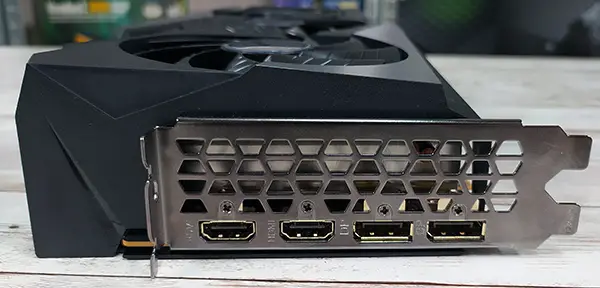
Test setup
All video cards were tested with Microsoft Windows 11 operating system. The test platform consisted of a Core i9-10900K on a Gigabyte Z490 AORUS Master motherboard with G.Skill Trident Z 2x8GB DDR4-4000 (17-17-17- 37) and a Crucial P1 M.2 2280 1TB SSD remains unchanged.
Prestazioni Gigabyte RX 6950 XT GAMING OC 16G
As written in the previous paragraphs and as can be guessed by observing the technical specifications, from the Radeon RX 6950 XT one should not expect a clear leap forward in performance compared to the model that preceded it, but an improvement that depending on the title can be more or less marked but in any case not such as to upset the market scenario.
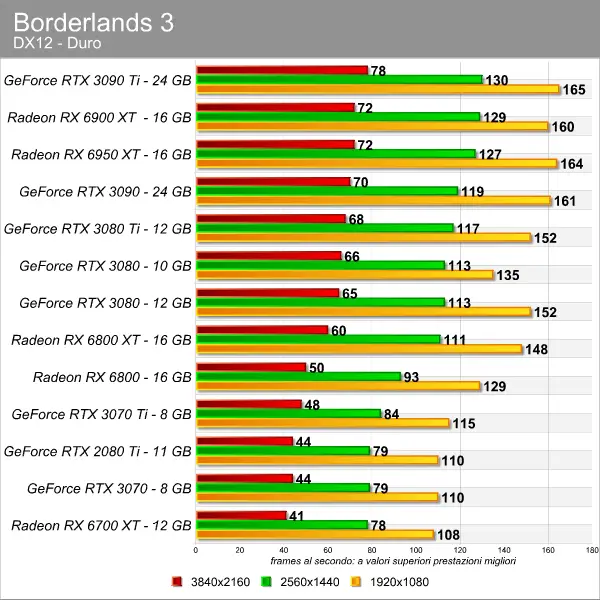
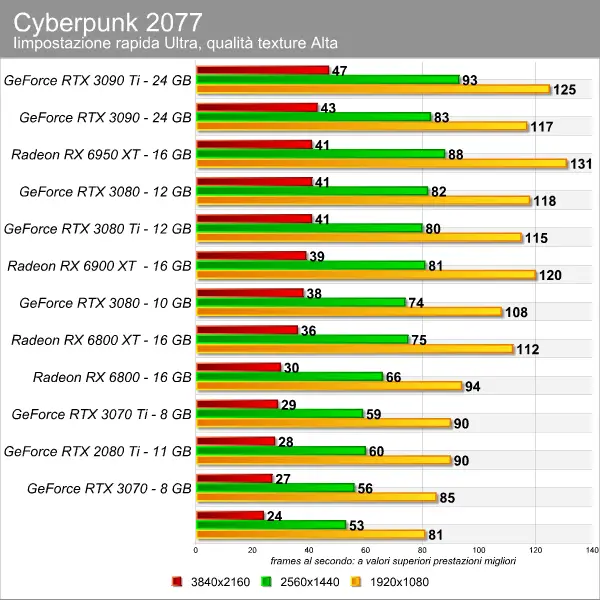

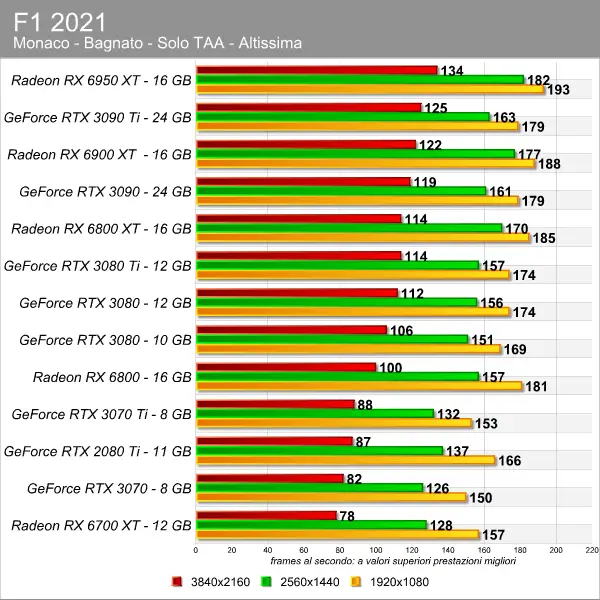
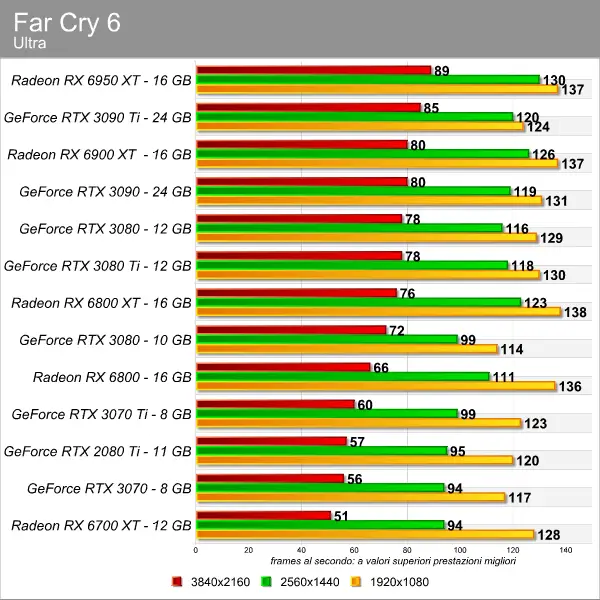
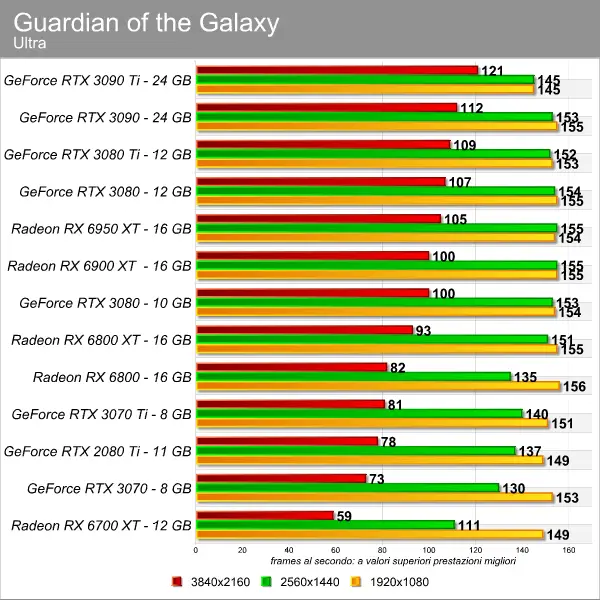
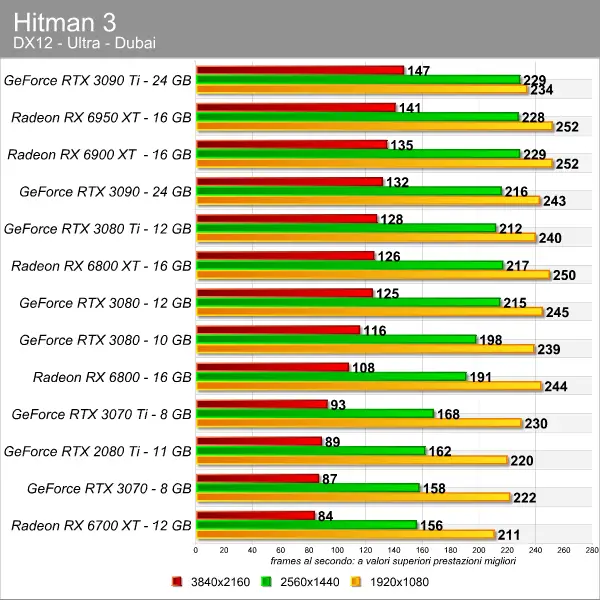
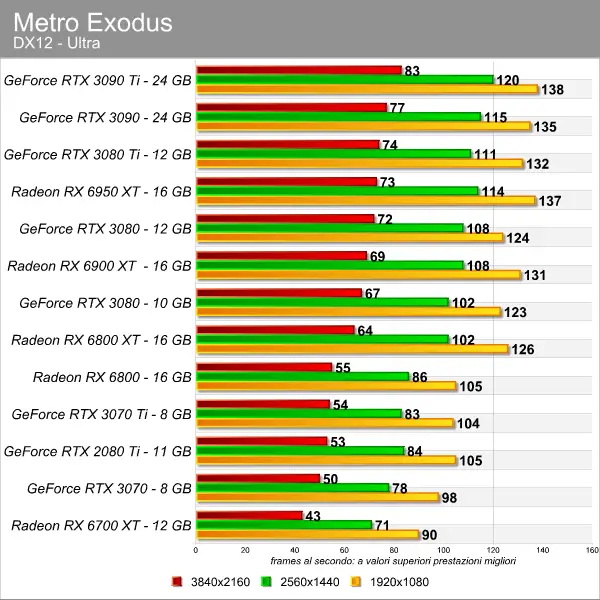
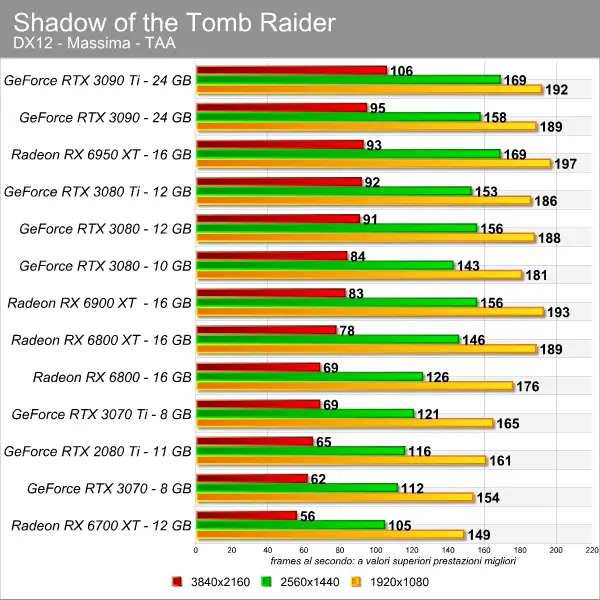
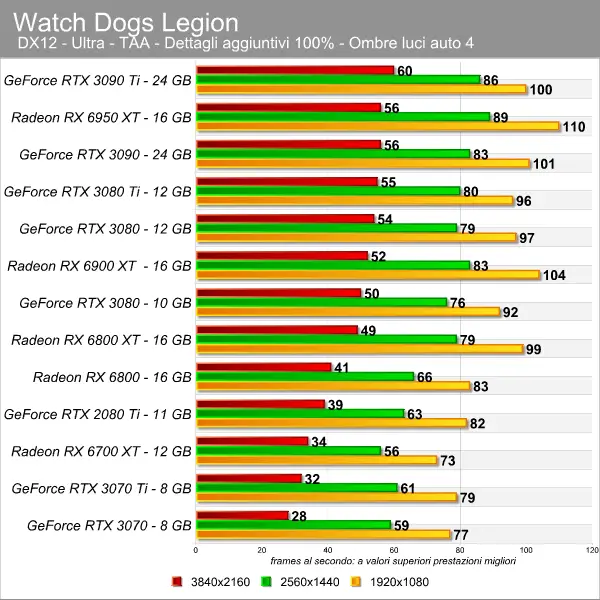
The most interesting aspect of this series of benchmarks is that the Radeon RX 6950 XT manages to outperform the GeForce RTX 3090 in terms of performance without ray tracing, where the predecessor RX 6900 XT was forced to chase at 4K resolution.
Frequency, temperature and consumption
AMD’s RDNA 2 architecture is characterized by high operating frequencies and the Radeon RX 6950 XT is no exception. The graphics you see were obtained with the BIOS set to the Performance profile.
The GPU on board the Gigabyte solution remains, during the load periods between the benchmark sessions, around 2430 MHz. A sign that the WindForce 3X heatsink keeps the GPU, and the video card in general, at such temperature levels as to make it express to the fullest.
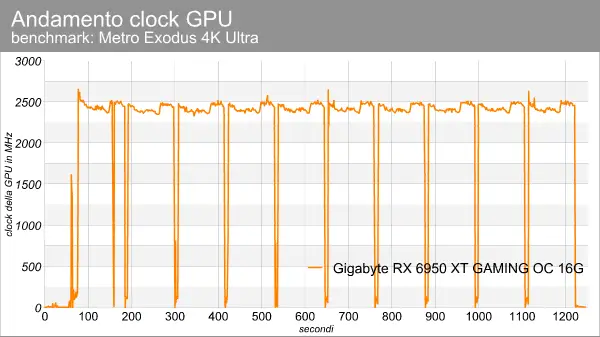
We therefore arrive at the temperature. The GPU remains close to 65 ° C, a very low temperature if we think about the power offered. The hot spot, the hotspot, is just above 80 ° C, and this value is also within an adequate operating range. Out of curiosity, we also tested the BIOS in Silent mode, detecting a GPU temperature of 70 ° C and a hotspot of 87 ° C by virtue of fans running at around 1400 RPM against the 1600-1700 RPM seen with the BIOS Performance. The noise, without prejudice to an environmental value of 39 dB with the fans stopped, therefore sees a peak of 46.5 dB with the Performance BIOS and 45 dB with the Silent one.
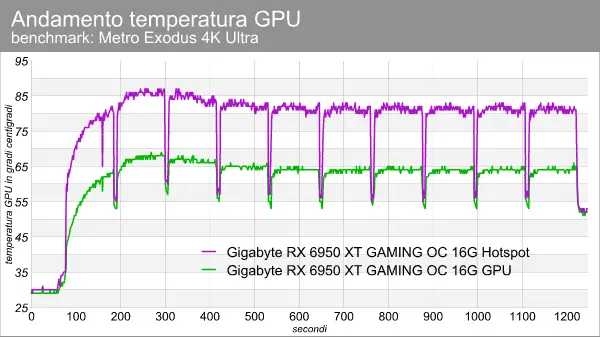
AMD reported a Radeon RX 6950 XT TBP of 335W, but the card we tested peaks at over 400W, with an average demand of 370-380W in the test sections under load.
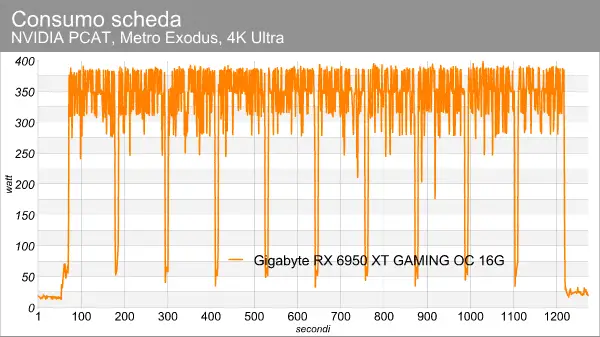
Conclusions
The Radeon RX 6950 XT arrives on the market at a price of $ 1099 tax-free which in Italy translates into starting prices which, looking at different shops, are around 1200 euros. The RX 6950 XT should be seen mainly as a gaming video card, unlike the RTX 3090 and RTX 3090 Ti which also look to the world of rendering thanks to the 24 GB of VRAM, and as such should be compared mainly to the RTX 3080 Ti. The latter can be purchased starting from a similar list price, around 1200-1300 euros, but offers lower performance than AMD’s newcomer as regards gaming without ray tracing. As we have had the opportunity to investigate throughout the generation, the ray tracing performance of the AMD architecture is not at the level of that of NVIDIA Ampere, but in any case there are upscaling algorithms such as FSR 1.0, 2.0 and RSR to the rescue.
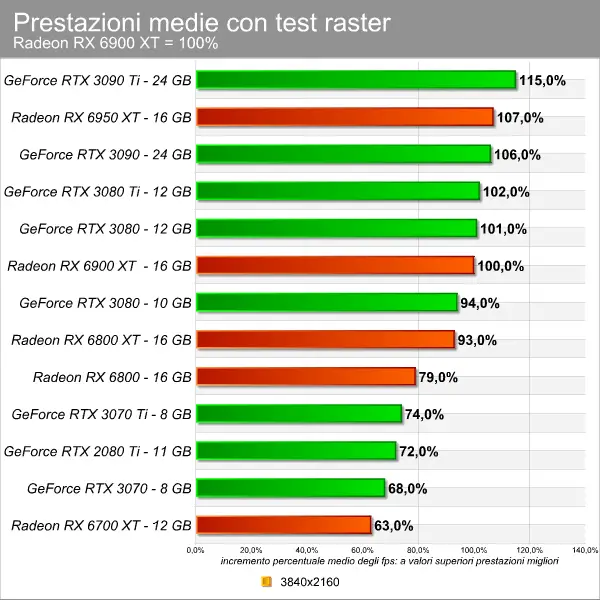
For those looking at gaming without active ray tracing, the RX 6950 XT is now one of the best solutions you can buy, wallet permitting. At the same time, however, it does not offer clearly superior performance to the 6900 XT which can be found around 1000 euros, sometimes even less. In short, on the one hand we have a high-level card, but at the same time not too faster than a 6900 XT and with ray tracing performance that chases NVIDIA solutions.
The biggest problem, however, is the timing with which the 6950 XT arrives on the market: the release in the second half of the year of the new generation GPUs from NVIDIA and AMD makes buying a top of the range today frankly little sense.





